How allspice grows in the natural environment and how to grow it at home
Allspice, or Jamaican pepper, is grown on plantations and 50 to 75 kg of fruit is collected from a tree. This healthy spice with a piquant taste can be bought at any grocery store, or you can cultivate it at home and flavor hot chocolate and various dishes with aromatic ground allspice grown yourself.
What is allspice and where does it grow?
Spice allspice Pimento officinalis is made from the unripe fruits of a perennial tree. This pepper is also called Jamaican pepper. This tree grows in countries with tropical climates - India, Brazil, Cuba and Jamaica.
Pimenta fruits, blue-green in color, are hand-picked before they ripen so that they do not lose their flavor. Afterwards, the fruits are dried for 5 to 10 days in the sun or in a special dryer, cleaned, sorted and sent to stores in whole or ground form. In the photo, the peppercorns are brown. This is what they look like after drying.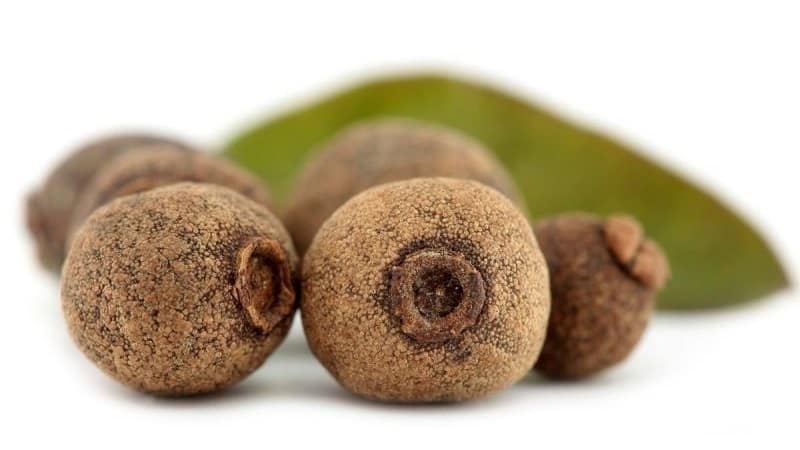
Application and taste difference between allspice and black pepper
Black and allspice are two different trees. Black pepper is a vine that belongs to the pepper family and grows in India. Allspice is a large tree up to 10 m high from the myrtle family. Black pepper is smaller and darker than allspice and has a more pungent taste.
Allspice is milder and tastes like a mixture of cinnamon, black pepper, cloves and nutmeg. Allspice peas are added to marinades, meat sauces and meat soups.Before use, they are removed from the dish. Allspice powder is added to dough for gingerbread, muffins and cookies.
Interesting. Pimento oil, which is found in allspice, is used in the production of liqueurs.
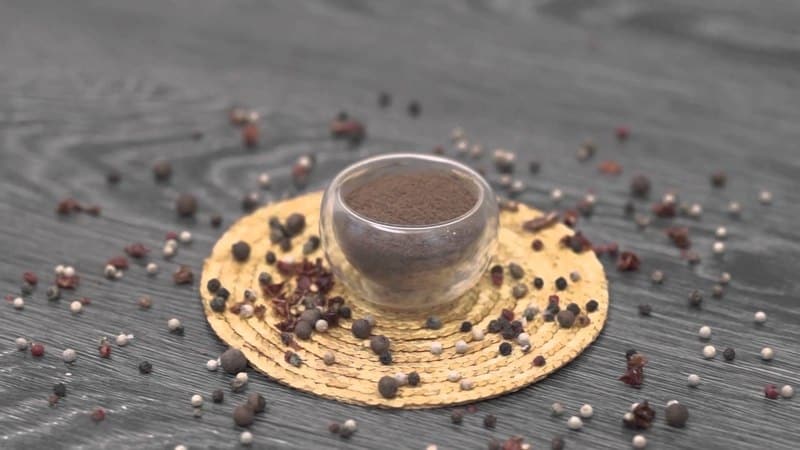
The nuances of home growing
Allspice seeds for growing are purchased at gardening stores or extracted from dried allspice peas.
Seeds are planted, like other seedlings, in March-April.
If the winter is colder than 10 degrees, it is better not to plant allspice in open ground. This heat-loving spice is suitable for a winter garden or glassed-in loggia.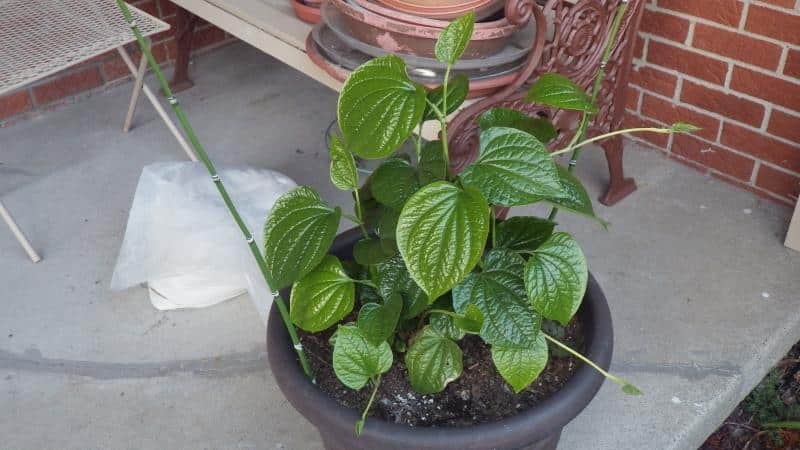
How to grow allspice peas at home
You need to prepare in advance everything you need for future plants.
Seed selection and pre-planting preparation
Experienced gardeners advise using large seeds from several fruits to increase the likelihood of germination. To make it easier to replant plants in soil or a pot, it is better to plant the seeds in separate peat cups. Pour sand into cups, lightly compact, moisten and make small holes for seeds.
Attention. The seeds have a fairly strong peel, so to speed up the emergence of seedlings, before planting they are soaked in water heated to 40-50 degrees for a day.
Conditions and growing seedlings
After soaking, the seeds are planted for germination in sand, which must be constantly moist. If the air in the room is too dry, the seedlings are sprayed daily with water from a spray bottle.
Potting and care
 If the seeds were not initially planted in separate peat cups, the seedlings are transplanted into a container with fertilized soil.
If the seeds were not initially planted in separate peat cups, the seedlings are transplanted into a container with fertilized soil.
You can buy ready-made soil or mix garden soil with peat or humus yourself.
Pepper sprouts 3 cm high are planted at a depth of 2-3 cm, the distance between seedlings in one container should be at least 10 cm.
Picking
Plants are transplanted into the ground before the onset of hot weather at an air temperature of at least 20 degrees. Pimenta does not withstand transplantation well due to the special structure of the root system and fragile stems.
For better adaptation, seedlings are planted together with a lump of earth at a distance of 14 cm from each other.
Humidity level
If the seedlings are insufficiently watered, the tips of the leaves darken, and if the seedlings are overwatered, the leaves turn yellow. Water the seedlings every 2-3 days. In hot weather, water daily without increasing the amount of water.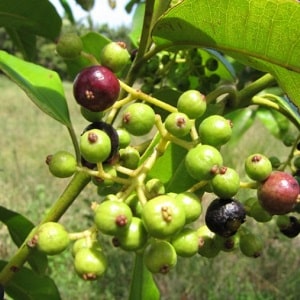
Temperature and lighting
Jamaican pepper is a tropical plant, so the container with the seedlings is placed in a bright, warm place and covered with glass and cellophane to create a greenhouse effect.
The air temperature should be at least 20 degrees, the optimal temperature is 25-28 degrees.
Fertilizing
Yellow leaves of seedlings indicate a lack of nutrients in the soil. Seedlings are fed with universal fertilizer for indoor plants once every 14 days in spring and summer.
Reproduction methods and main mistakes
In addition to propagation by seeds, allspice is propagated by cuttings and layering.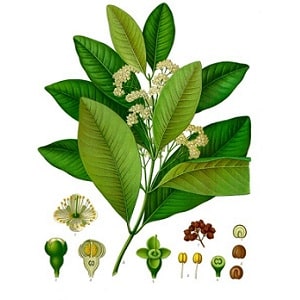
The cuttings are separated from the grown plant and rooted in a greenhouse at a temperature of 25 degrees in soil made from one part of leaf soil and two parts of sand. Leaf soil is humus from the leaves of deciduous trees. The cuttings take root in 20 days, after which they are planted in pots with a mixture of peat, humus, leaf soil and sand in equal proportions.
When propagated by layering, horizontal shoots are attached to the ground with special pins. With sufficient light and humidity, the shoots quickly produce roots. After this, they are seated in separate pots.
Main mistakes in breeding and their consequences:
- burns and death of plants from direct sunlight;
- wilting of plants due to dry soil and air;
- wilting and yellowing of plants due to excessive watering;
- death of plants from lack of nutrients in the soil.
First harvest
Allspice bears fruit 6 years after planting.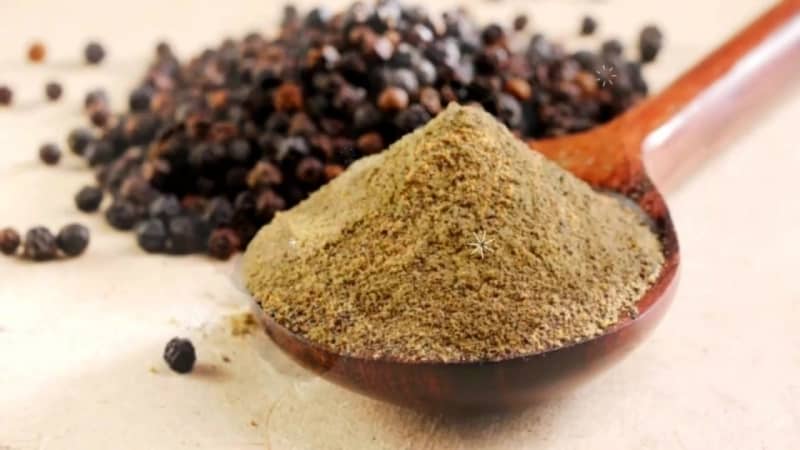
Little growing tricks
With proper care, pimenta will produce a harvest of fragrant fruits even at home.
- Seedlings should be pinched on the third leaf, this stimulates the growth of side shoots.
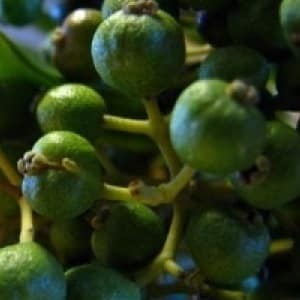
- The plant does not like either direct sunlight or complete shade. It is better to put it in a warm, bright place.
- To quickly germinate seeds, create a greenhouse effect by covering the containers with glass or cellophane. In the morning and evening, the coating is removed briefly to allow oxygen to enter.
- Gardeners recommend replanting adult plants every 3-4 years or replacing the top layer of soil annually.
Read also:
How to prepare whole pickled bell peppers for the winter.
How and where pink pepper grows and in what areas it is used.
Conclusion
Cultivating Pimenta officinalis at home is a completely doable task. With proper preparation of seeds, compliance with lighting, watering and plant nutrition, you can get your own harvest of allspice.